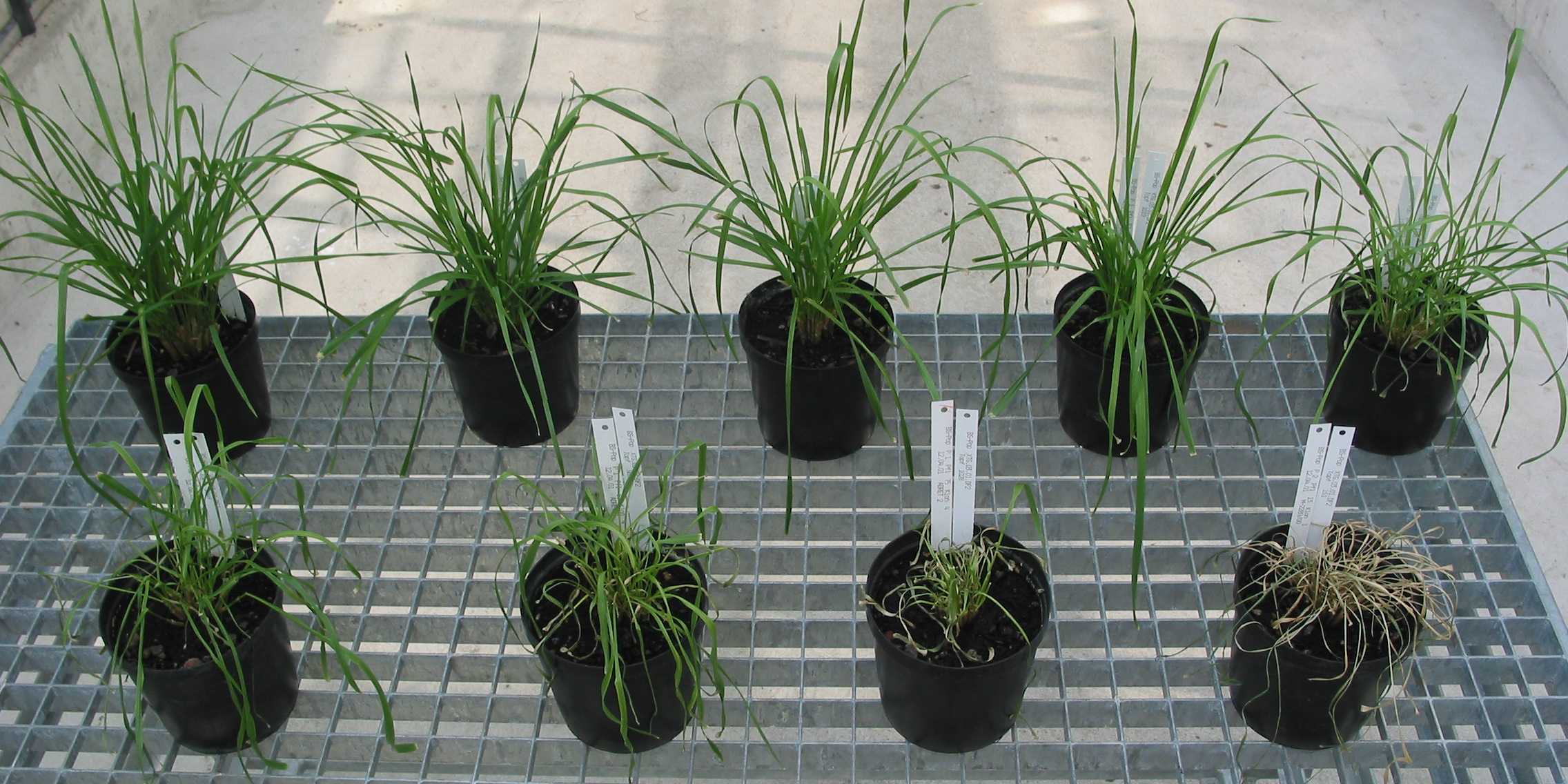Candidate genes for bacterial wilt resistance in Italian ryegrass
High-resolution bulked segregant analysis revealed a ~300 kb region associated with resistance to Xanthomonas translucens pv. graminis.

Italian ryegrass (Lolium multiflorum Lam.) is one of the most widely used forage grass species in temperate grasslands due to its high yield potential and quality. However, it is susceptible to bacterial wilt, caused by Xanthomonas translucens pv. graminis (Xtg), which can cause serious yield losses. To breed for resistance more efficiently, identifying specific genetic regions associated with resistance to the disease would be greatly beneficial.
A first study using a segregating F1 population resulting from a cross between an individual of the susceptible cultivar ‘Adret’ and a resistant individual from advanced breeding germplasm of Agroscope (M2289) was able to identify a major QTL for resistance on linkage group 4. However, further characterization of the QTL was hindered by the lack of sequence information for L. multiflorum at the time.
More recently, a bulked segregant analysis (BSA) using pooled DNA sequencing of segregating individuals of the same F1 population identified scaffolds mapping to the same region associated with resistance. However, the small number of individuals, together with the low sequencing depth and the fragmented nature of the M2289 draft genome assembly prevented further fine-mapping of the QTL region and determination of the underlying genes. Nonetheless, this served as a first proof of concept for the efficiency of BSA for fine-mapping the resistance QTL.
In this study, we generated a large F2 population (n = 7484), derived from the previously used F1 population and formed pools of the most resistant and susceptible individuals for whole-genome deep sequencing. Using high-quality chromosome-level reference genome sequences, we identified a ~300 kb region that was highly associated with resistance on pseudo-chromosome 4, corresponding to the previously identified resistance.
Further investigation of this region uncovered multiple genes with a known role in disease resistance, including genes encoding for Pik2-like disease resistance proteins, cysteine-rich kinases, and RGA4- and RGA5-like disease resistance proteins. These genes constitute interesting candidate genes that will be investigated further in following validation studies. Furthermore, markers identified in this region hold significant potential for marker-assisted breeding strategies.
This study further highlights the efficacy of BSA, especially when combined with whole-genome deep sequencing of large populations, to identify candidate genes associated with binary traits of interest. The identified genes and markers will help to better understand Xtg resistance and to breed new resistant forage grass cultivars.
Citation:
Goettelmann F, Chen Y, Knorst V, Yates S, Copetti D, Studer B and Kölliker R (2024) High-resolution bulked segregant analysis enables candidate gene identification for bacterial wilt resistance in Italian ryegrass (Lolium multiflorum Lam.). The Plant Journal.
external pagehttps://onlinelibrary.wiley.com/doi/full/10.1111/tpj.16693
